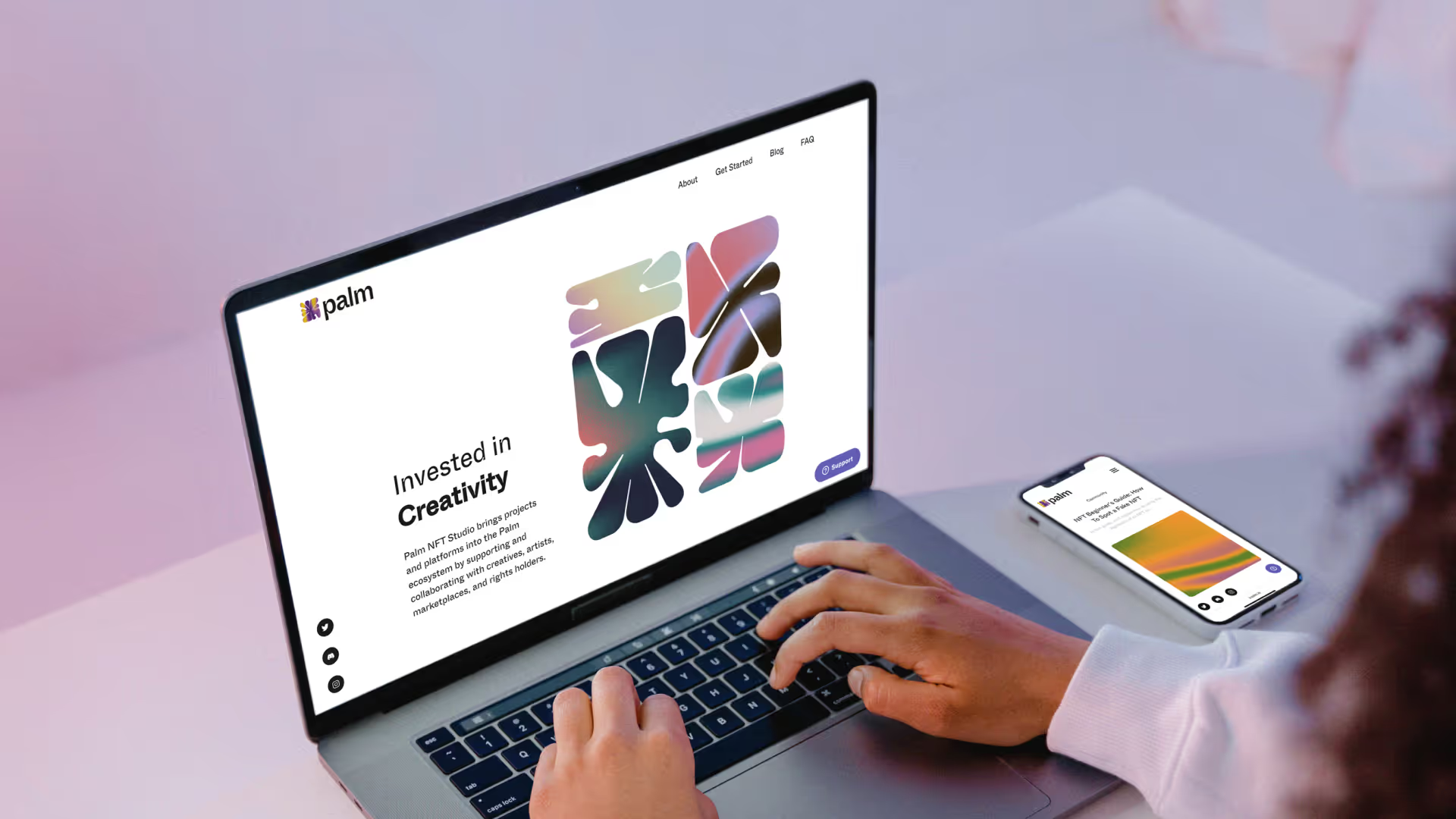Finding the branding firm right for you is hard - almost as hard finding the right date. One may be a friend of a friend very hard to break up with; one will ask for significant commitment upfront; another will ghost you when times are hard. And we haven’t even started on preferences, features and characteristics.
Over the many years we’ve worked with innovation-led tech companies we’ve seen the same thing time and again. Clients come to us exhausted, suspicious, and confused about the branding process. It’s the same story every time. Founders and marketing execs have starved their budgets to invest in a rebrand only for the process to be confused, the metrics unclear, and their patience worn thin.
Many tech founders are self-made, talented individuals focused on building a product they believe will sell itself - until it doesn’t. Why? Because products don’t sell themselves, brands do. Investing in a brand is investing in your business. You can’t develop an entire brand strategy with quick fixes and sprints. A brand strategy is the foundation of all marketing activities, the activities responsible for selling your product. Take shortcuts early and you’ll pay the price further down the line. Yup, it’s frustrating.
It takes time to make the decision to get your brand in place and pull the trigger. And when you do, be prepared for a long ride. There are different options when it comes to branding -- you can do it in-house (which mostly works for B2C companies with in-house art direction or large firms with enough fire power), use an external supplier, or a combination of both.
If using an external supplier for any re-branding elements picking the right branding firm is crucial. After all, the best way to enjoy a journey is to pick a partner who doesn’t annoy the hell out of you, you will be spending a lot of time together after all.
The path to hiring a branding firm right for you starts with doing your homework. So if you’re reading this you’re on the right track.
Steps to hiring a branding firm
The agency - client relationship is a two way street. Your success is dependent on finding the right supplier, and their success is dependent on your achieving your goals. Most branding firms rely on relationships, reputation, and referrals for new business. So how do you make sure to find the right agency match for your company?
Get inspired
Read up about best branding firm practices from the top global agencies -- such as Pentagram, JKR, or Sagmesiter & Walsh. Their work and thought leadership will help you get excited about the process. Your goal is to look for agencies with relevant experience, a strong portfolio and reputation and exactly the services you require.
Do your homework
The next step is to look into agencies that specialize in the services you need. Branding is a complex process and different firms often have different focuses -- some may provide Naming but not Marketing; some create strategic brand frameworks but steer clear of ongoing content production. The go to platform for browsing and filtering agencies according to services is Clutch. Referrals are also highly recommended in this space (remember the 3R’s - relationships, reputation, and referrals?).
Collect references (but remember what you do)
Building a portfolio of references saves time and reveals your creative aspirations, but when it comes to corporate branding leave personal preference at the door. Everyone has a favourite brand, afterall building a strong emotional connection is the ultimate design goal. It’s fine to be aspirational and a good agency should want to challenge the status quo, but if you’re in the B2B cloud solutions space avoid referencing popular DTC consumer brands. Warby Parker and Allbirds have impressive and respected identities, but their aesthetic is unlikely to speak to business leaders the same way it does their own customers. Certain styles are prominent in industries and often for good reason.
Define clear goals and limitations for the project
Be extremely clear when it comes to project goals and ensure there is consensus within the leadership team. If you do not have a clear idea of what needs to be done the agencies cannot be expected to do so.
The three main values you have to define for the project are: how much money are you willing to spend; how long do you want the project to take; what would you like to get out of the project (metrics or deliverables).
Branding is a complex service involving research, strategy, creative and production, If you’re new to the process it is likely you’ll be unaware of the numerous workstreams involved. Even the smallest of scope adjustments can turn into a time and money drain if not properly estimated in the first place. For that reason few agencies will begin work without a defined and approved scope of work. The main sources of conflicts in the agency world are scope changes after a sign off - often a lack of coordination on the client’s side can turn a perfect relationship into a mistrustful one.
Be realistic
Branding firms often joke their work can be two of three things: good, fast, cheap - but never all three. Although tongue in cheek there is an element of truth at play here. Consider what your priorities are and be prepared for the outcome. If you’re in need of a new brand in weeks some agencies may dedicate their whole team to the cause, but be prepared to pay for it. On the other hand if you’re restricted financially a more relaxed time frame may be the solution to helping you achieve your goals.
Reach out to multiple branding firms
Finding the right firm is like working through a marketing funnel: cast a wide net to obtain agency portfolios, pick 3-4 agencies, set up intro calls and begin the vetting process. In addition to an overview of their processes you will want to request relevant case studies, client references and service proposals with timelines and budget estimates.
Introductory calls
On intro calls let every shortlisted agency know your project goals, the bigger picture, company dynamics and business goals. Be honest and transparent the way you’d like your future relationship to be. These people will be more than just service providers. Over time they will become partners, allies, ambassadors and supporters. Provide each agency with the same scope and limitations and compare across timing, budgets, deliverables and supporting services.
This step by step guide should help you hire the right agency for you. When evaluating agencies, make sure to compare them across various characteristics, such as their portfolio; their performance with other clients; their promise, requested budgets and process. Remember, you are choosing a partner for the long haul. One ready to take responsibility for the project and commit to achieving the results your team are looking for.
Finding the branding firm right for you is hard - almost as hard finding the right date. One may be a friend of a friend very hard to break up with; one will ask for significant commitment upfront; another will ghost you when times are hard. And we haven’t even started on preferences, features and characteristics.
Over the many years we’ve worked with innovation-led tech companies we’ve seen the same thing time and again. Clients come to us exhausted, suspicious, and confused about the branding process. It’s the same story every time. Founders and marketing execs have starved their budgets to invest in a rebrand only for the process to be confused, the metrics unclear, and their patience worn thin.
Many tech founders are self-made, talented individuals focused on building a product they believe will sell itself - until it doesn’t. Why? Because products don’t sell themselves, brands do. Investing in a brand is investing in your business. You can’t develop an entire brand strategy with quick fixes and sprints. A brand strategy is the foundation of all marketing activities, the activities responsible for selling your product. Take shortcuts early and you’ll pay the price further down the line. Yup, it’s frustrating.
It takes time to make the decision to get your brand in place and pull the trigger. And when you do, be prepared for a long ride. There are different options when it comes to branding -- you can do it in-house (which mostly works for B2C companies with in-house art direction or large firms with enough fire power), use an external supplier, or a combination of both.
If using an external supplier for any re-branding elements picking the right branding firm is crucial. After all, the best way to enjoy a journey is to pick a partner who doesn’t annoy the hell out of you, you will be spending a lot of time together after all.
The path to hiring a branding firm right for you starts with doing your homework. So if you’re reading this you’re on the right track.
Steps to hiring a branding firm
The agency - client relationship is a two way street. Your success is dependent on finding the right supplier, and their success is dependent on your achieving your goals. Most branding firms rely on relationships, reputation, and referrals for new business. So how do you make sure to find the right agency match for your company?
Get inspired
Read up about best branding firm practices from the top global agencies -- such as Pentagram, JKR, or Sagmesiter & Walsh. Their work and thought leadership will help you get excited about the process. Your goal is to look for agencies with relevant experience, a strong portfolio and reputation and exactly the services you require.
Do your homework
The next step is to look into agencies that specialize in the services you need. Branding is a complex process and different firms often have different focuses -- some may provide Naming but not Marketing; some create strategic brand frameworks but steer clear of ongoing content production. The go to platform for browsing and filtering agencies according to services is Clutch. Referrals are also highly recommended in this space (remember the 3R’s - relationships, reputation, and referrals?).
Collect references (but remember what you do)
Building a portfolio of references saves time and reveals your creative aspirations, but when it comes to corporate branding leave personal preference at the door. Everyone has a favourite brand, afterall building a strong emotional connection is the ultimate design goal. It’s fine to be aspirational and a good agency should want to challenge the status quo, but if you’re in the B2B cloud solutions space avoid referencing popular DTC consumer brands. Warby Parker and Allbirds have impressive and respected identities, but their aesthetic is unlikely to speak to business leaders the same way it does their own customers. Certain styles are prominent in industries and often for good reason.
Define clear goals and limitations for the project
Be extremely clear when it comes to project goals and ensure there is consensus within the leadership team. If you do not have a clear idea of what needs to be done the agencies cannot be expected to do so.
The three main values you have to define for the project are: how much money are you willing to spend; how long do you want the project to take; what would you like to get out of the project (metrics or deliverables).
Branding is a complex service involving research, strategy, creative and production, If you’re new to the process it is likely you’ll be unaware of the numerous workstreams involved. Even the smallest of scope adjustments can turn into a time and money drain if not properly estimated in the first place. For that reason few agencies will begin work without a defined and approved scope of work. The main sources of conflicts in the agency world are scope changes after a sign off - often a lack of coordination on the client’s side can turn a perfect relationship into a mistrustful one.
Be realistic
Branding firms often joke their work can be two of three things: good, fast, cheap - but never all three. Although tongue in cheek there is an element of truth at play here. Consider what your priorities are and be prepared for the outcome. If you’re in need of a new brand in weeks some agencies may dedicate their whole team to the cause, but be prepared to pay for it. On the other hand if you’re restricted financially a more relaxed time frame may be the solution to helping you achieve your goals.
Reach out to multiple branding firms
Finding the right firm is like working through a marketing funnel: cast a wide net to obtain agency portfolios, pick 3-4 agencies, set up intro calls and begin the vetting process. In addition to an overview of their processes you will want to request relevant case studies, client references and service proposals with timelines and budget estimates.
Introductory calls
On intro calls let every shortlisted agency know your project goals, the bigger picture, company dynamics and business goals. Be honest and transparent the way you’d like your future relationship to be. These people will be more than just service providers. Over time they will become partners, allies, ambassadors and supporters. Provide each agency with the same scope and limitations and compare across timing, budgets, deliverables and supporting services.
This step by step guide should help you hire the right agency for you. When evaluating agencies, make sure to compare them across various characteristics, such as their portfolio; their performance with other clients; their promise, requested budgets and process. Remember, you are choosing a partner for the long haul. One ready to take responsibility for the project and commit to achieving the results your team are looking for.



.svg)

.avif)
.avif)
.svg)